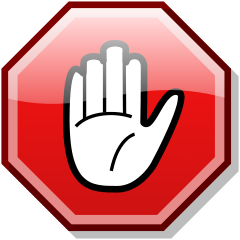OGC:Firearm Customization (5e Variant Rule)
| This material is published under the OGL 1.0a. |
Firearm Customization
Any firearms that you decide to use in your games can be improved in either one or many of the following ways:
Bayonet. You can turn your musket into a spear by plugging a long knife into the end of the barrel. Since affixing the bayonet requires some time, a musket may not be fired and used as a spear in the same round, although you may freely switch between them each round.
Double Barrel. It is possible to purchase muskets and pistols (including matchlocks and the harquebus) with two barrels. A double-barreled firearm costs 1.5 times its original price and weighs nearly twice as much. A double-barreled musket also has the heavy property.
Double-barreled firearms with the loading property can be fired twice before reloading.
A misfire generally only fouls one barrel; the other may be used normally until it too misfires.
Rifling. Rifling a barrel increases its effective range and accuracy, but lowers the round’s speed. All ranges of a rifled firearm are doubled, but the damage dice for hand cannons and harquebuses are 2d3 and 2d4 respectively. Firearms that do 1d12 damage do 2d6 damage instead with a rifled barrel. Rifled barrels are slower to load, so you can never move on a turn when you load and fire a rifled weapon, even if you have a fire source ready. Rifling a barrel requires several hours and a gunsmith workshop. Purchasing a rifled firearm adds 50 gp to its cost.
Sighting. Putting proper sights on a firearm is tricky, especially with smoothbore weapons, but possible. It requires a few hours (within the span of a long rest) and grants a +1 attack bonus when using the firearm. You need to make a DC 20 Wisdom ability check with the gun kit tool proficiency bonus to properly apply a sight to a firearm. Add 100 gp to purchase a firearm with sights, or 200 gp to add sights to an existing firearm.
Superposed Barrel. One early solution to the problem of multiple shots was the superposed barrel—a barrel would have several shots loaded inside it with a separate touch hole for each. The creature would slide back the hammer to the appropriate touch hole to fire the next shot.
Superposed barrels can be applied to any firearm in any era, but have a couple of major drawbacks. First, all such weapons gain the loading and two-handed properties if they don’t already have them, as it takes time and both hands to ready the weapon after a shot is fired (a creature wishing to only fire a single shot may do so one-handed as normal for one-handed firearms). Second, superposed weapons are subject to violent chain misfire that ignites all balls at once, damaging the weapon (as if a disadvantaged misfire) and causing damage to the creature holding the weapon equal to one ball as if it’d shot itself (damage may be doubled if there are three or more balls in the barrel). If there is only one bullet left in the firearm when the creature rolls a 1 to attack then use the normal rules for a misfire.
Modifying a firearm to take superposed loads requires several hours and a gunsmith workshop. Most superposed guns only have 3–5 shots; if a creature wishes to add more, then the GM may impose an appropriate gunsmith proficiency check to see if the gun is ruined in the attempt. Add 50 gp per extra shot (up to four) to the cost of a regular firearm.
Volley Fire. A pepperbox may be modified to fire volleys instead of single balls. It gains the volley property with damage equivalent to a single ball fired from the weapon. A creature can either convert the pepperbox on its own if it has a gunsmith kit or pay 50 gp to an expert to make the conversion for it.
Back to Open Game Content → Variant Rules
Back to Main Page → Publication List → Publishers → EN World → EN Publishing
